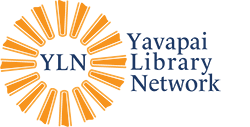Learning to look : dispatches from the art world
(Book - Regular Print)
Author
Published
New York, NY : Oxford University Press, [2021].
Physical Desc
xii, 202 pages ; 19 cm
Status
More Details
Published
New York, NY : Oxford University Press, [2021].
Format
Book - Regular Print
Language
English
Notes
General Note
Formerly CIP.,Uk
Bibliography
Includes bibliographical references and index.
Description
"Works of art sometimes leave us speechless. But they almost never shut us up. They can't. There's just too much to say. Talking about art doesn't leave things as they are; it changes everything. To look, to think, to say what you see, or why you respond as you do, this changes what you see and it changes your response. The effort and the caring remake us. They remake us, in real time, as we listen to the song, or examine the painting, or watch the movie. This is not unique to art, of course. What I have just outlined goes for all experience and is really life's first principle: life is a process of growth and reorganization, a process that commences right then when we first act, for we reorganize ourselves and develop in response to the ways what we do changes what we undergo, as Dewey might have said. But art aims at this; there is art so that we may remake ourselves, and also, so that we may catch ourselves in the act of this remaking. Art requires creation, even from its beholder. Yogi Berra was right: you can see a lot by observing. But observation - the effort and the caring - this requires thought, attention, focus. It can be play, but it is also work-like. Art always proposes a task, and the task is neither easy nor quite well-enough defined. The task, though, is only this: try to perceive, try to bring what is there into focus. If you do this, you will find yourself unveiled and, to whatever little extent, put together anew. The crucial thing to accept is that we don't get all this - the wow, the pleasure, the unveiling, and the reorganization - just for the price of admission. We have to join in, turn on, throw thoughts and reactions at the works themselves, position ourselves to catch them on the rebound, and allow room for emotions, not always positive. This is something we typically do with other people, and in the field cast by their responses and their words and argument. Works of art are always strange provocations; sometimes they offend us; more often they leave us untouched, unaffected, even bored. And this is where their value lies. Each of the short writings collected here is an exercise in giving art and myself the time to let something happen; I try to do this work so that art may do its work. Some of them were written while I was working on my 2015 book Strange Tools: Art and Human Nature, and they flow from the same well of curiosity that nourished that project. The title is borrowed from Joshua C Taylor's famous Learning To Look, which was the first book about art that I ever read"--,Provided by publisher
Description
Loading Description...
Also in this Series
Checking series information...
Copies
| Location | Call Number | Status |
|---|---|---|
| Paulden Public Library - NF - Nonfiction Books | 701.1 NOE | Find It Now |
Subjects
LC Subjects
Reviews from GoodReads
Loading GoodReads Reviews.
Citations
APA Citation, 7th Edition (style guide)
Noë, A. (2021). Learning to look: dispatches from the art world . Oxford University Press.
Chicago / Turabian - Author Date Citation, 17th Edition (style guide)Noë, Alva. 2021. Learning to Look: Dispatches From the Art World. Oxford University Press.
Chicago / Turabian - Humanities (Notes and Bibliography) Citation, 17th Edition (style guide)Noë, Alva. Learning to Look: Dispatches From the Art World Oxford University Press, 2021.
MLA Citation, 9th Edition (style guide)Noë, Alva. Learning to Look: Dispatches From the Art World Oxford University Press, 2021.
Note! Citations contain only title, author, edition, publisher, and year published. Citations should be used as a guideline and should be double checked for accuracy. Citation formats are based on standards as of August 2021.
Staff View
Loading Staff View.

